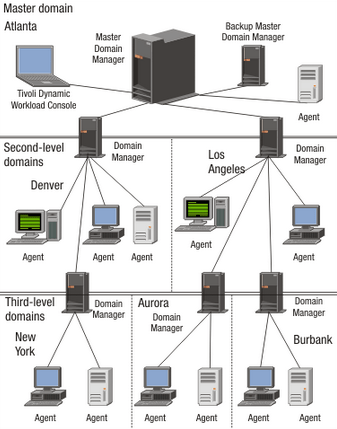Four Benefits of Application-Aware Networking

The phenomenon of application-aware networking is giving network administrators more control over the various software programs and services that work within a larger enterprise network Application-aware networking, which is based on the fundamental idea of intelligent networking and a software defined network, allows for more monitoring of individual programs within the network environment. This is leading to some significant benefits for IT departments and those responsible for making sure that network systems, and software processes within them, work the way they are supposed to at all times.
End to End Network Visibility
One of the biggest benefits of these kinds of systems is the idea of end to end network visibility, where administrators can get a better idea of how voice, data and other applications are working within the network. Rather than presenting network professionals with a cryptic “black box” system, an intelligent network using application-aware design can share decision-makers what’s happening so that they can make changes and optimize the network as necessary.
Performance
Application-aware networks can also help to optimize performance. There are a number of ways that these technologies can help, from changing the network resources available to programs in real-time, to predicting what a software application may need in the future. Businesses use these kinds of optimization to serve greater strategies, such as providing the best customer experience over a high-traffic network. With larger companies handling so many users and such a large amount of daily traffic, any small edge can be magnified many times, which is why new types of intelligent networks are allowing companies to become much more competitive in their markets.
Less Downtime
Anyone who has worked with a new IT service or product knows that the question of downtime is almost always essential. Downtime can change the equation on what clients expect from technology. Excessive downtime intrudes into existing business processes and interrupts operations, which can drive down productivity, and ultimately, revenue. That’s why administrators track downtime so closely and often talk in depth with vendors and others to make sure that downtime is minimized.
Application-aware networks and more intelligent network designs will generally serve the principle of minimizing downtime or making sure that needed resources are available. These systems can also help with analyzing aspects of the network for any bugs or glitches that might otherwise cause problems. Building this kind of functionality into a network can assist in those other strategies for minimizing downtime, such as conducting planned upgrades during non-business or non-functional “dark hours” where they will not interrupt the daily life of the office.
Building Improved Systems Through Informed Resource Allocation
When administrators know what individual software programs need, they are better able to build capacity into their systems. Again, this can mean predicting what new changes will require in the future or building systems for existing memory allocation levels. IT management is often a difficult dance of portioning out existing memory and processing capacity between various software applications and business processes in order to make the most of IT resources without generating expensive expansions or fixes. This is another way that application-aware systems can help, because the kinds of monitoring that go on can take the place of less precise and broader upgrades that can cost a lot of money.
All of these principles go a long way toward explaining why businesses are jumping on the bandwagon and getting involved in service agreements for the kinds of software that promote application-aware network design. This popular strategy takes place within a greater trend toward highly evolved networking and business process software systems where many businesses are adding new components to their legacy IT architectures in order to stay competitive and modernize their operations for the future. Businesses of all sizes may benefit from taking a look at existing network structures and figuring out whether a more informed model can help to streamline processes, conserve resources and pursue more efficient IT operations.

